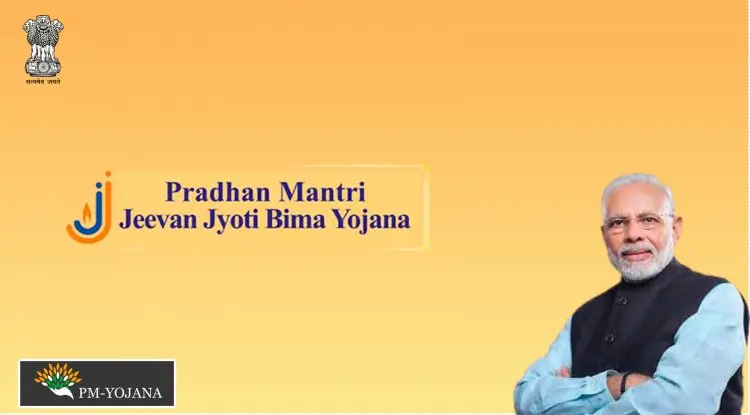Pradhan Mantri Jeevan Jyoti Bima Yojana
Pradhan Mantri Jeevan Jyoti Bima Yojna is a life insurance scheme that provides a life cover of Rs.2 lakh at Rs.330/year.

Pradhan Mantri Jeevan Jyoti Bima Yojana
Pradhan Mantri Jeevan Jyoti Bima Yojna is a life insurance scheme that provides a life cover of Rs.2 lakh at Rs.330/year.
PMJJBY – Pradhan Mantri Jeevan Jyoti Bima Yojana
Pradhan Mantri Jeevan Jyoti Bima Yojana (PMJJBY) is a life insurance scheme in India backed by the Government. It was announced in the 2015 budget. The life insurance scheme is valid for one year and is renewable from year to year, offering coverage in case of sudden death. It provides a cover of Rs.2 lakh on the sudden demise of a policyholder for a nominal premium of Rs.330 per annum.
This scheme is purely an insurance scheme, and there is no investment component involved. The scheme is offered by Life Insurance Corporation of India (LIC) and also other insurance companies willing to offer the product on similar terms, in collaboration with Banks.
Who Qualified For PMJJBY?
An individual in the age group of 18-50 years, having a savings bank account is eligible for the scheme.
Pointers To Note
- The individual can join the scheme through one bank account only even if he has multiple bank accounts
- In the case of joint account holders, all holders are eligible to join the scheme
- Linking of Aadhar card to the savings account is mandatory
Pradhan Mantri Jeevan Jyoti Bima Yojana Date of Launching 9th May 2015 Launched by PM Narendra Modi Government Ministry Ministry of Finance Candidates can know the detailed information about the Pradhan Mantri Jeevan Jyoti Bima Yojana on the Official Website.
Benefits Of Pradhan Mantri Jeevan Jyoti Bima Yojana (PMJJBY)
- The scheme provides a life cover of Rs.2 lakh to the beneficiary in the event of sudden demise of the policyholder.
- This is a life insurance scheme and offers benefits only in sudden demise; there are no benefits available on maturity or surrender of the policy.
- The premium payable is eligible for tax benefits as a deduction under section 80C of the Income Tax Act.
What Will The Premium Amount Be?
The premium amount is Rs.330 per person per annum. The breakup of the same is as follows:
- PMJJBY scheme premium to the insurance company – Rs. 289 per annum per member
- Reimbursement of expenses to the bank or the agent – Rs. 30 per annum per member
- Reimbursement of the administrative costs to the participating bank – Rs. 11 per annum per member
What Is The Coverage Under This Scheme?
The life cover under the scheme is Rs. 2 lakh to the beneficiary of the policy in case of demise of the policyholder.
What Is The Coverage Period?
The scheme is applicable for a period of one year. The initial period of enrolment was 31st August 2015 to 30th November 2015. The current period is from the 1st of June to 31st of May of the subsequent year. The same will be renewable yearly.
How To Enrol To This Scheme?
An individual can join the scheme through the bank in which he holds the savings account. The scheme is managed through LIC and other private life insurance companies. Those who wish to enrol can do so by paying the full annual premium amount anytime during the year. Those who have exited the scheme can also join back by paying the annual premium.
How To Raise a Claim?
On the demise of the policyholder, the claim will be settled by the respective Pension and Group Scheme (P&GS) Office/Unit of LIC. The process for claim settlement is as follows:
- The nominee of the policy will have to approach the bank of the policyholder, which is linked to the PMJJBY scheme.
- The nominee must have the death certificate of the policyholder.
- Next, the nominee needs to collect the claim form and the discharge receipt. The same can be collected from the bank or download the forms from the website of LIC, Bank, Jansuraksha portal of the Finance Ministry.
- Next, the nominee needs to collect the claim form and the discharge receipt. The same can be collected from the bank or download the forms from the website of LIC, Bank, Jansuraksha portal of the Finance Ministry.
- The nominee must then submit the claim form, discharge receipt, death certificate and the xerox copy of a cancelled cheque of the nominee’s bank account if available, if not he must provide bank details of the savings bank account of the policyholder that is linked to the PMJJBY scheme.
Processing of a Claim
By Bank
- On receipt of the claim, the bank official will verify if the policy is active. The Bank will check if the premium for the said cover on Annual Renewal Date, i.e. 1st of June, prior to the member’s death was deducted and remitted to the respective P&GS Unit of LIC.
- If the policy is active, the bank will check the nominee details and claim form and fill out relevant columns of the claim form.
- The bank must then submit the following documents to the designated P&GS office of LIC a) Duly filled claim form b) Death Certificate c) Discharge Receipt d) Photocopy of the cancelled cheque of the nominee (if available).
- The time limit for submitting the claim form to the designated P&GS office of LIC is 30 days from the receipt of the claim form from the nominee.
By Designated P&GS Unit
- Verify the claim form and the documents attached and ensure completeness. If not, contact the bank concerned.
- Next, the Designated P&GS Unit will verify if the member’s coverage is in force and no death claim settlement has been affected for the member through any other account. If any claim has been settled previously, the nominee will be informed, and a copy will be marked to the bank.
- If this is the only claim settlement, then the amount will be released to the nominee’s bank account/ policyholder account, and an acknowledgement will be sent to the nominee and a copy marked to the bank.
- The insurance company has 30 days to settle the claim form the receipt of the claim from the bank.







